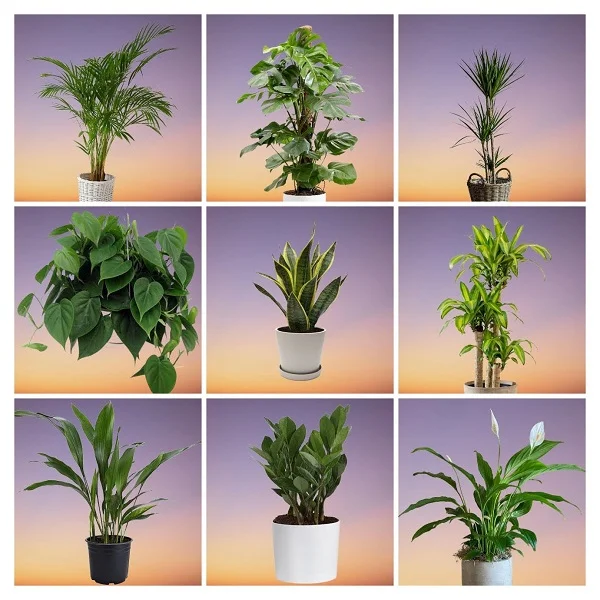10 Low Maintenance Plants that Clean Indoor Air (Air Purifying Houseplants)
Some links in this post may be affiliate links
According to a research conducted by NASA, some houseplants were found to be effective in cleaning indoor air of harmful pollutants like ammonia, xylene, benzene, formaldehyde, trichloroethylene in addition to increasing oxygen concentration.
The air is filled with lots of hazardous gases, fumes, chemicals among others which are as a result of technological advancement.

Pollutants are found in computers, phones, furniture, paints, detergents, varnish, sprays and others.
These pollutants are especially in higher concentrations in our indoor spaces basically because air circulation is limited.
Some of these pollutants may have adverse effect on human health. Of major concern are the Volatile Organic Compounds(VOCs).
What Toxins Do Plants Remove From The Air?
Some of the most common toxins or Volatile Organic Compounds (VOCs) in our living spaces are:
Trichloroethylene: This is found in paints, varnish, dry cleaning chemicals and adhesives.
Formaldehyde: This is a water soluble organic compound found in grocery bags, cleaning agents, lacquers, varnishes and paper tissues.
Xylene: Xylene is mainly found in tobacco smoke, rubber products, paints and vehicle exhaust fumes.
Benzene: Benzene is a common solvent mainly found in gasoline, oils, rubber and plastics.
Ammonia: Ammonia is commonly found in house cleaners, floor wax and fertilizers.
Below we have outlined 10 of the NASA recommended easy-care houseplants for removing toxins from indoor air.
10 Easy-care Indoor Plants for Increased Oxygen and Clean Air
Our list of the best plants with air cleaning properties include Snake Plant, Pothos, Areca Palm, Bamboo Palms, Dracaena marginata, English Ivy, Peace Lily, Spider Plants, Heartleaf Philodendron among others.
1. Snake Plants (Dracaena trifasciata)

Snake Plants also called Mother in law's tongue are effective in getting rid of carbon dioxide, benzene, trichloroethylene, xylene, toulene and formaldehyde. Theu also increase the oxygen concentration in the air
Snake Plants are hard to kill plants which will withstand low light, dry air, drafts and long periods without water.
Dracaena trifasciata require bright light with 6-8 hours of direct sunlight, average warmth of 16-290C, moderate humidity of 50-55% and moderately moist, loose, fertile, succulents soil coupled with monthly feeding during the growing season.
Read more on how to grow and care for Snake Plants
2. Bamboo Palm (Chamaedorea erumpens)
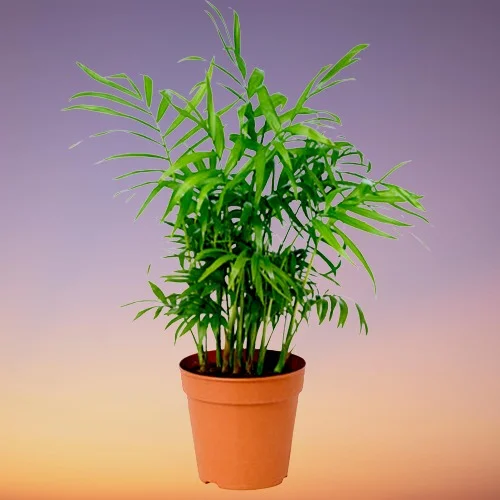
Bamboo Palm is one of the popular palms on account of its beauty, ease of care and air-cleaning properties as it removes trichloroethylene, benzene and formaldehyde from indoor air.
Chamaedorea erumpens can grow to a height of 6-10 feet placing it among the best tree-like plants for the home, office and other suitable spaces.
Chamaoderea erumpens blossoms in bright indirect light (filtered light), average warmth of 15-260C, humidity of 50-55% and moderately moist, rich, well-drained, all purpose soil coupled with monthly feeding during the growing season.
Learn more on how to grow and care for Bamboo Palm
3. Areca Palm (Dypsis lutescens)
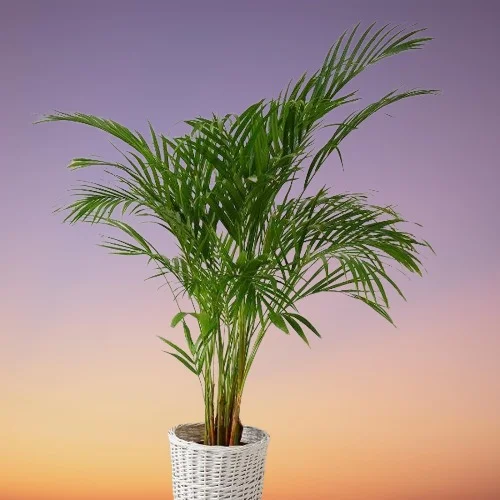
Areca Palm also called Butterfly Palm or Golden Cane Palm is a 6-10 feet plant with long, feathery fronds and smooth, yellowish, bamboo-like canes which is excellent in the removal of formaldehyde, xylene and toulene from indoor air.
As indicated by ASPCA, Butterfly Palm is non-toxic to humans and pets placing it among the pet-friendly plants that you can grow in any space.
Dypsis lutescens prospers in bright indirect light (filtered light), average warmth of 15-260C, moderate humidity of 50-55% and moderately moist, fertile, well-drained, all purpose potting soil coupled with monthly feeding during the growing season.
Read more on how to grow and care for Areca Palm
4. Peace Lily (Spathiphyllum wallisii)
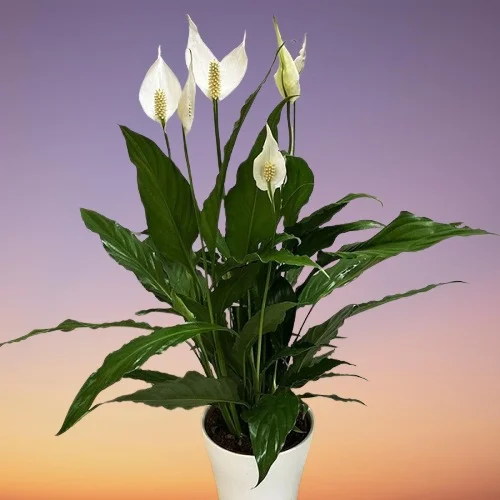
Peace Lily also called White Sails or Spathe Flower is great in the removal of formaldehyde, toulene, benzene, xylene, ammonia, mold and feacal matter from indoor air.
Spathe Flower is one of the most popular plants on account of its ability to clean indoor air while the dark-green glossy leaves and white blooms will brighten any space.
Spathiphyllum wallisii flourishes in bright indirect light (filtered light), average warmth of 18-260C, moderate humidity of 50-55% and moderately moist, fertile, well-drained, Peace Lily potting mix coupled with monthly feeding during the growing season.
Read more on how to grow and care for Peace Lily
5. Spider Plants (Chlorophytum comosum)
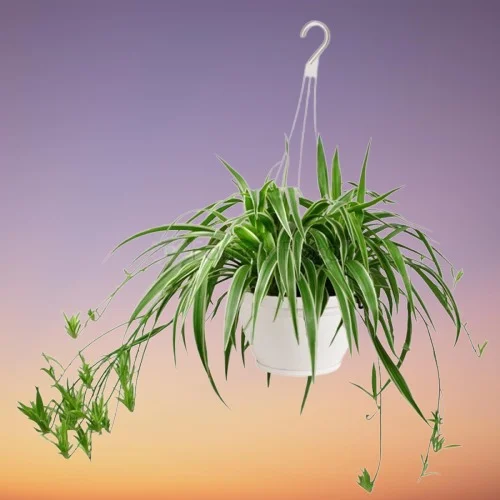
Spider Plant also called Airplane Plant, Spider Ivy or Ribbon Plant is good in the removal of benzene, formaldehyde, xylene and toulene from indoor air.
Airplane Plant produces numerous, long stems which bear tiny plantlets and hang down beautifully making it one of the best plants for hanging baskets.
Chlorophytum comosum thrives in bright indirect light, average warmth of 16-240C, humidity of 50-55% and consistently moist, fertile, well-drained, all purpose soil coupled with monthly feeding during the growing season.
Learn more on how to grow and care for Spider Plants
6. Heartleaf Philodendron (Philodendron scandens)
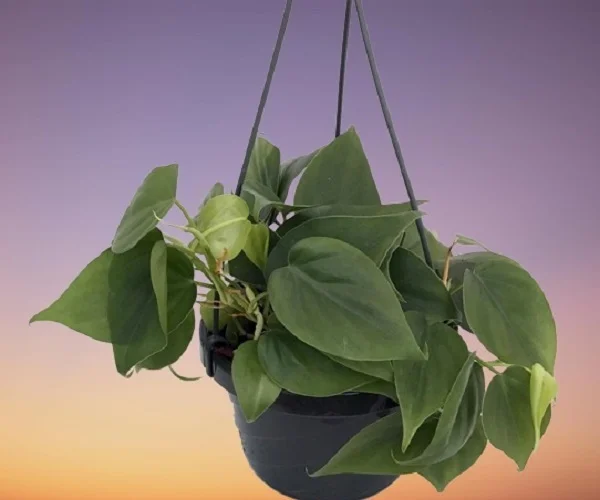
Heartleaf Philodendron also called Sweetheart Plant is one of the popular Philodendron varieties which bears magnificent, glossy, dark-green, heart-shaped leaves and stems which can grow to 6 feet long.
As indicated by the the NASA Clean Air Study, Sweetheart Plant is effective in the removal of trichloroethylene from indoor air and makes it one the best plants for a study table that boosts productivity.
Philodendron scandens grows best in medium to bright indirect light, average warmth of 18-260C, moderate humidity of 50-55% and moderately moist, fertile, well-drained, all purpose potting soils coupled with monthly feeding in the growing season.
Read more on how to grow and care for Heartleaf Philodendron
7. Corn Palm (Dracaena fragrans)

Corn Plant also called Corn Palm, Striped Dracaena, Compact Dracaena or Cornstalk Dracaena is one of the popular Dracaena varieties and gets rid of toulene, xylene, benzene, formaldehyde and trichloethylene from indoor air.
Corn Palm is a slow-growing, 6 feet tall plant making it one of the best large low-light plants for the living room and will stand out in any space.
Dracaena fragrans flourishes in bright indirect light (dappled light), average warmth of 16-280C, moderate humidity of 50-55% and consistently moist, rich, well-drained, all purpose soil coupled with monthly feeding during the growing season.
Learn more on how to grow and care for Corn Plant
8. Madagascar Dragon Tree (Dracaena marginata)
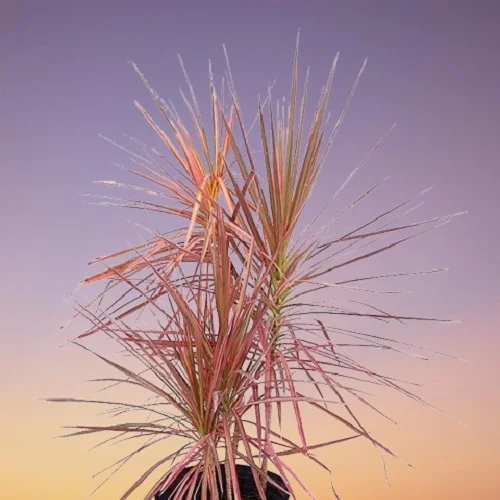
Madagascar Dragon Tree is one of the colorful Dracaena plants and is effective in removal of xylene, toulene, benzene, trichloroethylene and formaldehyde from indoor air.
The Madagascar Dragon Tree is among the best drought-tolerant plants with a aggressive root system and will easily adapt to a wide range of growing conditions.
Dracaena marginata grows best in bright indirect light (filtered light), average warmth of 15-280C, moderate humidity of 45-55% and moderately moist, rich, well-drained, all purpose potting mix coupled with monthly feeding during the growing season.
Read more on how to grow and care for Madagascar Dragon Tree
9. Pothos (Scindapsus aureus)

Pothos also called Devil's Ivy, Devil's Vine or Money Plant are popular Pothos plants with air purifying properties and gets rid of benzene, formaldehyde, xylene and toulene from indoor air.
Devil's Vines are fast-growing plants whose trailing stems can reach up to 6 feet making them perfect for hanging baskets.
Scindapsus aureus also called Epipremnum aureum flourish in medium to bright indirect light (dappled light), moderate warmth of 18-290C, average humidity of 50-55% and moderately moist, fertile, well-drained, Pothos potting soil coupled with monthly feeding in the growing season.
Learn more on how to grow and care for Pothos
10. English Ivy (Hedera helix)
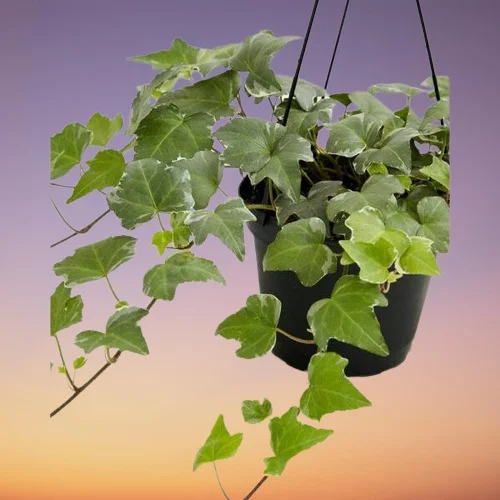
English Ivy also called Common Ivy or European Ivy is effective in the removal of formaldehyde, benzene, xylene, toulene, trichloroethlyene and air-suspended dust partcicles.
On account of its trailing growth habits and ability to tolerate less than perfect growing conditions, European Ivy, is one of the best small-sized low-light plants for shaded spaces.
Hedera helix prospers best in bright indirect light, average warmth of 16-260C, moderate humidity of 50-55% and moderately moist, fertile, well-drained, all purpose soils coupled with monthly feeding during the growing season.
Read more on how to grow and care for English Ivy
